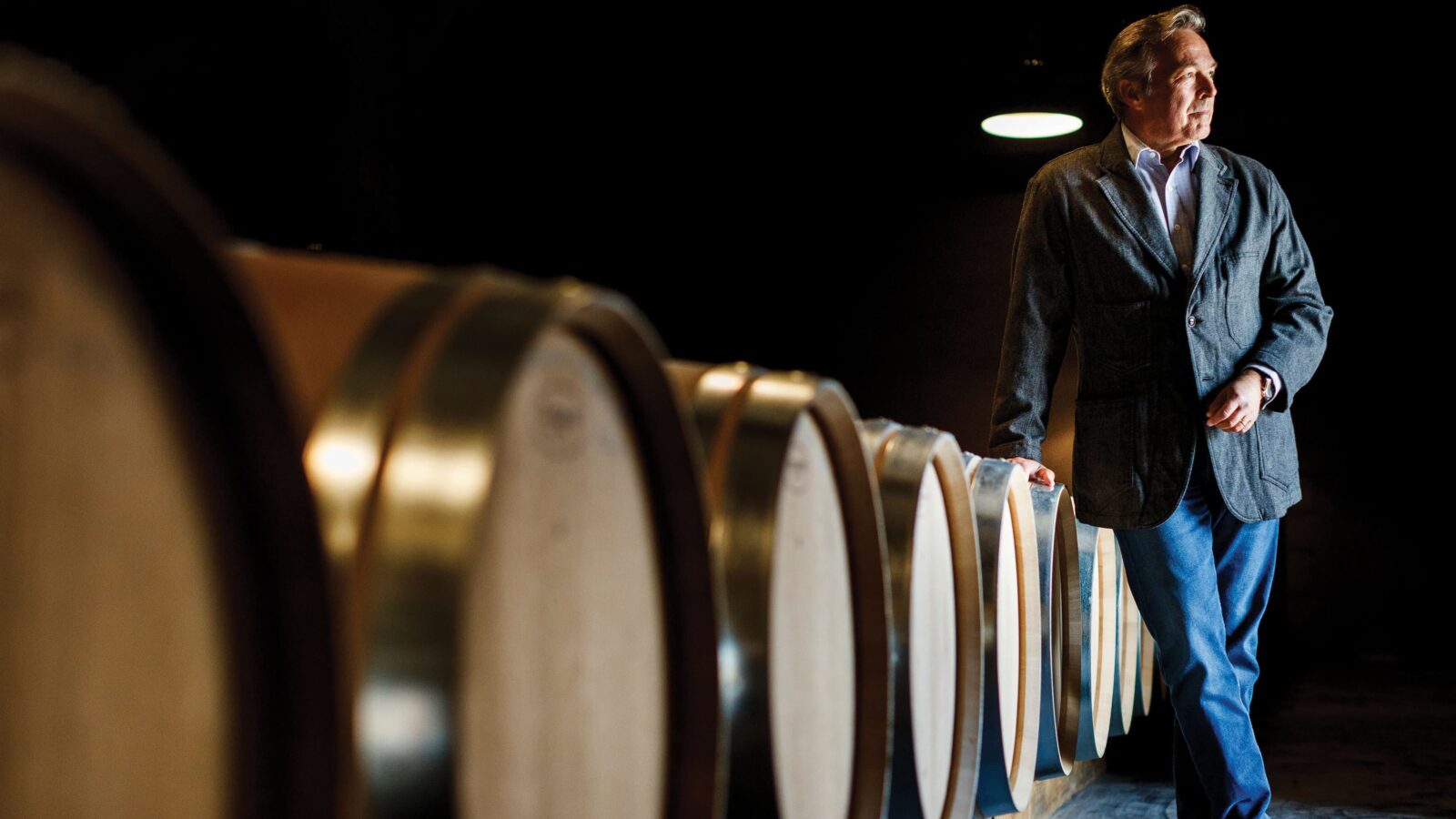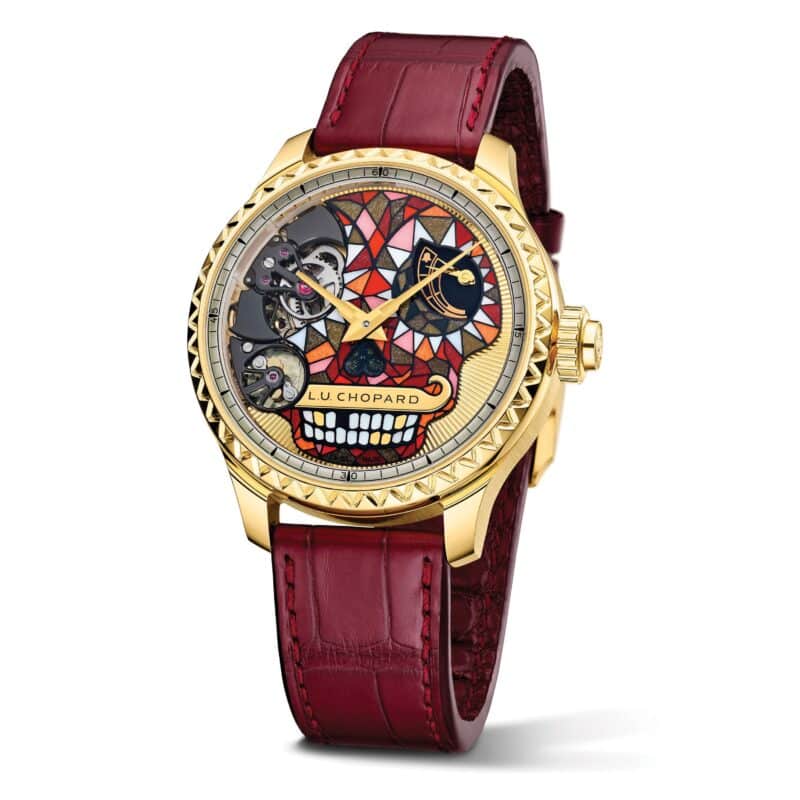One-off Chopard LUC watch marks Day of the Dead festival
A sneak peek of Chopard’s latest LUC collection models as we visit the watchmaker’s co-president

Chopard’s co-president Karl-Friedrich Scheufele’s passion for watchmaking is well known; he’s also a ‘biodynamic’ winemaker
Jacopo Salvi
Chopard’s perma-busy co-president Karl-Friedrich Scheufele is one of those people who has so much on the go that bystanders are often left wondering: “How does he do it all?” As well as running two highly successful watch businesses – Chopard and the low-volume, ultra high-end maker Ferdinand Berthoud – Scheufele also keeps (and uses) a collection of more than 40 classic cars, works as the co-founder of a charity dedicated to protecting Alpine eagles and oversees wine merchant’s business Le Caveau de Bacchus.
And, if that wasn’t enough, a dozen years ago Scheufele purchased a winery of his own, Château Monestier La Tour, 50 miles east of Bordeaux – a quintessential Périgord château that had been badly damaged by fire and had trees growing out of its floors.
Scheufele and his wife, Christine, commissioned a no-expense-spared restoration of the building, which can only be described as immaculate, from its mellow stone walls to its beautifully manicured gardens and from its exquisitely furnished interiors to its restored stables.

This unique LUC Full Strike Dia de los Muertos by Chopard should be worn to death
But it wasn’t, in fact, the château that attracted the Scheufeles to the property – it was the potential they could see in its equally neglected 30-hectare vineyard which, during its productive years, had been subjected to the onslaught of chemicals that wine growers began using during the 1970s.
The Scheufele’s dream was not only to make Château Monestier productive once more, but to do so in a way that the wine that emerged from it was not merely organic, but ‘biodynamic’ – a far more difficult grading to acquire.
The difference is that a wine can claim to be ‘organic’ if it is produced without the use of man-made pesticides or chemicals, whereas in order to be classed as biodynamic the land on which the vines are grown must have been worked without being touched by such products for more than a decade.
Additionally, they are grown using holistic farming methods that place equal importance on the plants, soil, and overall ecosystem by treating the vines with nine specific herb and mineral-based preparations which are ‘dynamised’ – i.e. stirred into water – before being added to the soil to build strength and counter pests and disease.
And it gets stranger: at Château Monestier, some of the preparations are buried in cow horns before being applied in accordance with the celestial calendar, with planting, pruning, picking and bottling being dictated by the phases of the moon.

Château Monestier La Tour has a total wine production area of 30 hectares
Jacopo Salvi
As well as the fact that all that makes for cleaner wine and a chemical-free vineyard, what attracted Scheufele to the bio-dynamic method was its connection to the interplay between the moon, the sun and the stars – the very things on which time and watchmaking are based.
It was for that reason that he invited Motor Sport to Château Monestier for a sneak peek at the latest models in the LUC collection, most of which won’t be officially seen until next year.
Chopard might be a single watchmaking entity but in fact it comprise two parts – the Geneva-based dial name and LUC (Louis-Ulysse Chopard, founder of the business in 1860) which manufactures more expensive watches in lower volumes, all made using movements and a majority of other components produced in-house.
Scheufele established LUC in 1996 in order to satisfy the same perfectionist streak that resulted in the uncompromising restoration of the château.
“I was convinced that LUC was the only way for our company to go forward in terms of authenticity and movement development”
“I was convinced that it was the only way for our company to go forward in terms of authenticity and movement development,” he explained. “The finish of every LUC watch had to be top line, and every one with a seconds hand had to be COSC chronometer-certified – and that is how it has remained to this day.”
In terms of both winemaking and watchmaking, Scheufele says he is guided by the words of sculptor Auguste Rodin who sagely observed: “What is done with time, time will respect.”
“Viticulture [the study and growing of grapes] and horology both take time, and there are always a lot of setbacks – but you only remember the great moments.”
Chopard celebrated two decades of LUC’s manufacture status in 2016 by unveiling the most technically complex watch it had ever created – the Full Strike. It’s a modern take on the minute repeater complication, which enables a watch to give an audible indication of the time on demand.
Invented long before the dawn of electric light when gloomy conditions made dials difficult to read, the minute repeater is now obsolete as a practical necessity – but mastering its mechanical complexity is still seen as a mark of horological prowess.
A minute repeater was first incorporated into a watch in the mid-18th century but the Full Strike interprets the mechanism using cutting-edge materials and technology. Most notably, the tiny, ring-shaped gongs that create the sound are made from transparent sapphire crystal and are integral with the ‘glass’ of the watch.

Motor Sport’s horology authority Simon de Burton, left, having a tour of the château by Scheufele
The patented arrangement, which eliminates the need for glue or screws, is said to create ‘a perfect loudspeaker’ and the resulting sound – tuned to the notes of C and F – is produced by a pair of minuscule steel gongs that were tested 1.5 million times on the prototype.
Traditionally, minute repeaters are activated using a ‘slide’ at the side of the case band. But all functions of the Full Strike are controlled by the crown. A button at its centre invokes the chimes, while winding it in one direction charges the dedicated spring barrel that powers the minute repeater and winding it in the opposite way rewinds a second spring that runs the timekeeping.
The system enables the minute repeater to chime ‘12.59’ – the longest possible sequence, comprising 12 strikes for the hours and 59 for the minutes – no fewer than a dozen times once fully wound.
With 533 components, the mechanism is fitted with seven ‘security devices’ to reduce the risk of a ham-fisted wearer attempting, for example, to adjust the time while the watch is striking or to make a second attempt at activating it while it is already striking, either of which could wreck the movement.
This one-off version has been created to mark Mexico’s Day of the Dead festival which, this year, is on November 2. The ‘skull’ dial was made using a marquetry technique requiring dozens of components to be individually hand set, while the case is made from ethical gold.
Chopard LUC Full Strike Dia de los Muertos, £TBC. chopard.com
